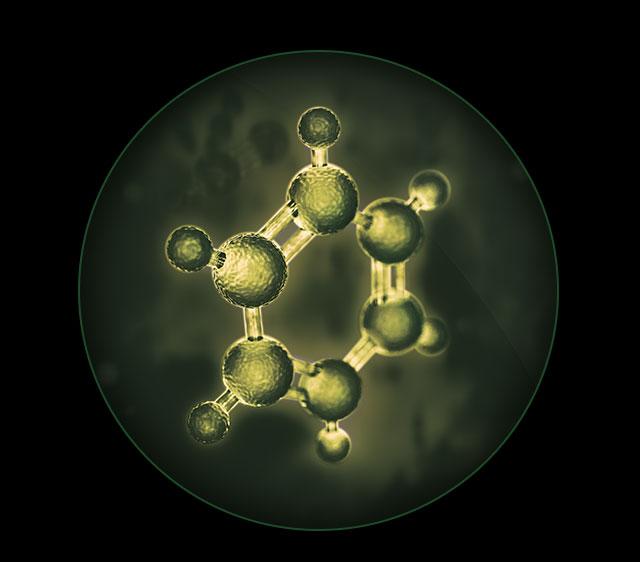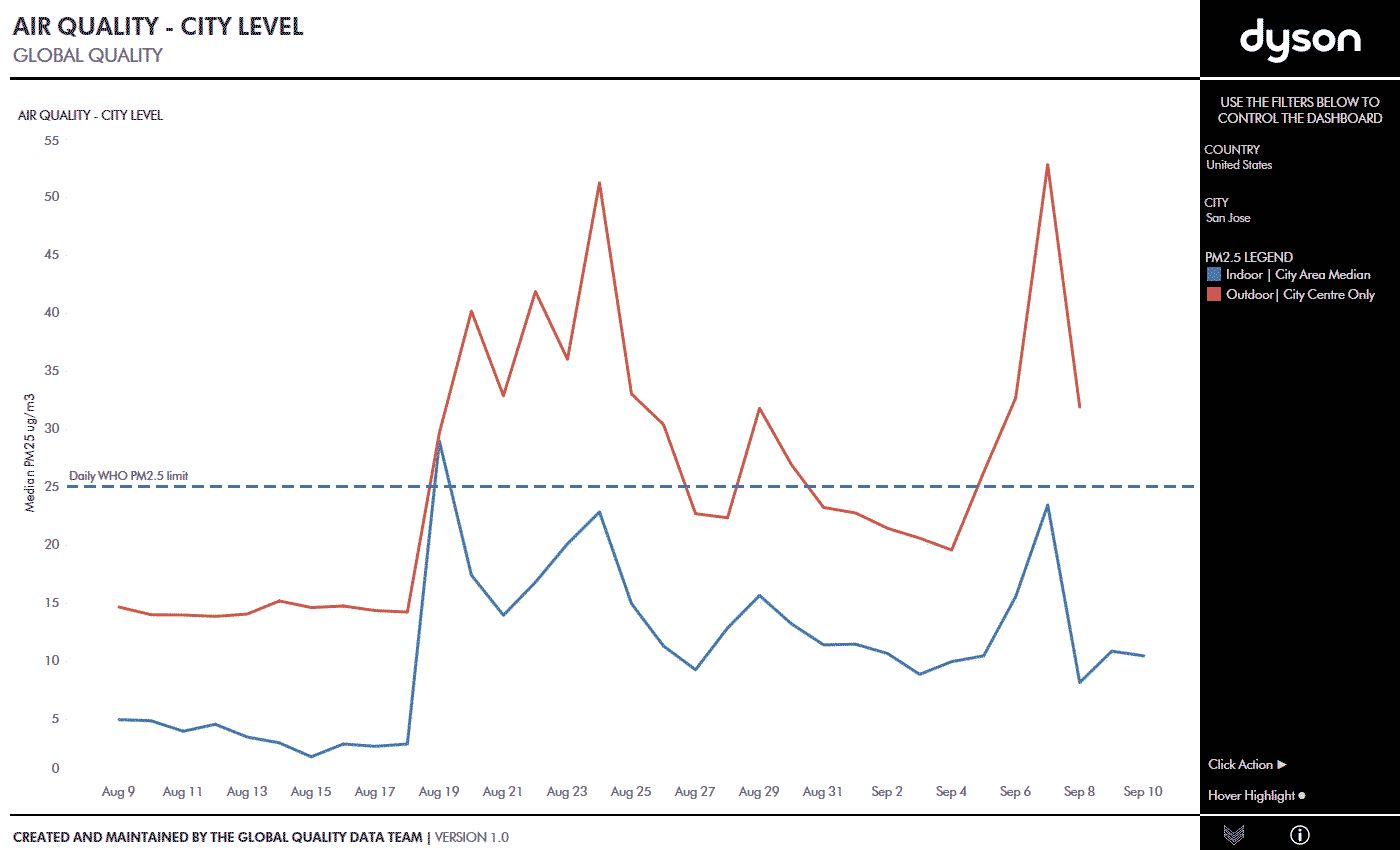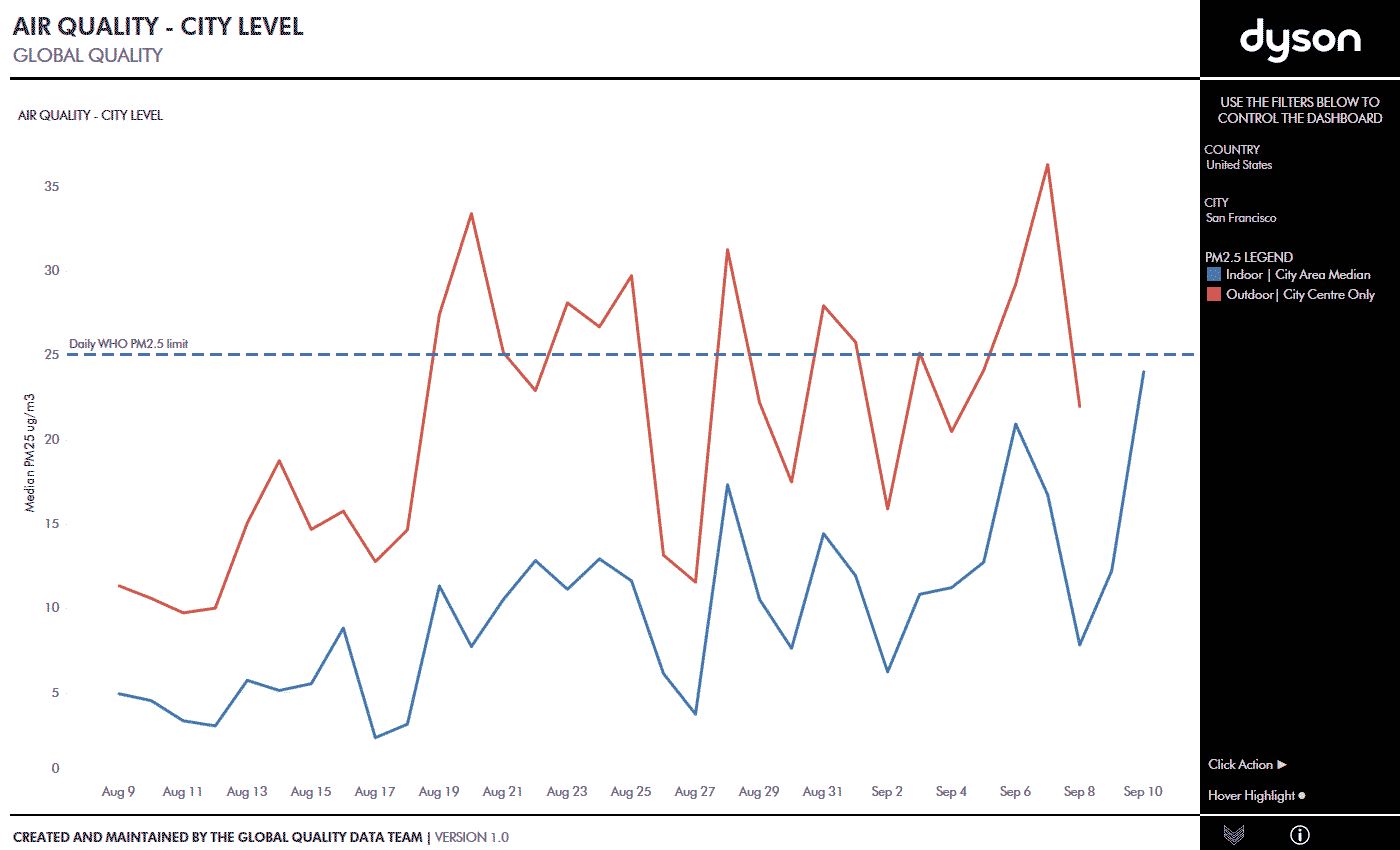Reducing exposure to wildfire smoke particles
Alongside devastating destruction, one of the main impacts of wildfires is the smoke that lingers for hours, days and sometimes weeks. The smoke is made up of a mixture of gases and fine particles from items such as burning vegetation, building materials and other matter. According to the CDC, smoke can harm you in many ways; by irritating your respiratory system, causing eye pain or worsening chronic heart or lung disease.
September 14 2020

Just as wind patterns can accelerate and change the direction of fires, it can also determine how far and where wildfire smoke can travel. Recent data from Dyson connected purifiers in the San Francisco and San Jose metro areas have shown several spikes in poor air quality, both inside and outside, over the past few weeks likely due to smoke from nearby wildfires. Reports of orange skies and haze from Northern California show how visible bad air quality can be. But in other cases, air pollution can be much less visible. For example, while you may not see the same haze inside your home, it is likely that some of that air pollution is making its way inside. In fact, outdoor pollution PM2.5 – such as those emitted from wildfires – is known to have a higher infiltration rate into homes, compared to the course and ultrafine PM size ranges[1].
San Jose / San Francisco
Dyson Design Engineer David Hill shared the following actions that those in impacted areas can take to try to reduce their exposure to wildfire smoke:
- Stay inside as much as possible – Unless you are asked to evacuate your area, staying inside can reduce your exposure to smoke, ashes and other air pollution. However, indoor air can still be impacted by outdoor pollution. Studies have shown that some air pollution can infiltrate indoors even through closed windows[2]. You can see the direct correlation between outdoor and indoor air when looking at the spikes in the data collected from connected Dyson purifiers.
- Take extra precautions to protect the air in your home - Even the most well sealed home can still allow for some outdoor air pollution to make its way inside. The CDC recommends using a freestanding indoor air filter to protect from the effects of wildfire smoke. Air purifiers with sealed HEPA filters can provide added protection from smoke as well as keep the air clean of everyday pollutants found in our homes such as dander from pets, fumes from gas stoves or volatile organic compounds (VOCs) from beauty products like hair spray.
- Make kids a priority – According to the American Lung Association, kids’ lungs are still developing meaning they are often breathing in more air for their size than adults. Make sure your children take the same – if not more - precautions to reduce their exposure. Consider moving existing purifiers or adding new ones to their bedrooms overnight.
- For those who must go outside, wear an effective mask – If you must go outside, be sure to protect yourself by wearing an effective mask. The CDC recommends wearing a fitted, NIOSH-approved N95 or P100 respirator.
[1] Liu et al (2003). Particle Penetration through Building Cracks. Aerosol Sci Technol 37:565-573; Liu et al (2001) Modeling pollutant penetration across building envelopes. Atmos Environ 35:4451-4462; Long et al (2001) Using Time- and Size-Resolved Particulate Data To Quantify Indoor Penetration and Deposition Behaviour. Environ Sci technol 2001 35:2089-2099
[2] Wang et al (2016) Indoor-outdoor relationships of PM2.5 in four residential dwellings in winter in the Yangtze River Delta, China. Environ Pollut 215:280-289
Press contacts
-
USA
Emails us at USPR@Dyson.com
1330 West Fulton Street, 5th Floor, Chicago IL, 60607
-
Social media
- Twitter: @dyson
- YouTube: youtube.com/dyson
- Facebook: facebook.com/dyson
- Instagram: @Dyson
- Instagram: @dysonbeauty
- LinkedIn: Dyson
- Pinterest: Dyson Technology




